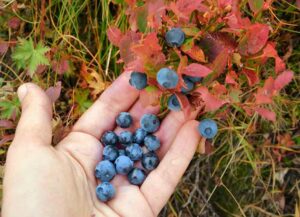Foraging for food has become a popular activity in recent years. People have become more interested in learning about the wild plants that grow around them.
While foraging for food can be enjoyable, it can also be useful for survival.
If you want to forage, here are three tips to get you started.
Before foraging for food, learn plant identification
If you want to go foraging for food, you must first learn how to identify edible plants. After all, not every plant is safe to consume, and the last thing you want to do is become ill or worse.
Fortunately, there are a few key characteristics to look for when attempting to identify edible plants.
First, make sure there are no poisonous clones of the plant. This can be difficult because many toxic plants resemble edible plants.
If you are unsure, err on the side of caution and avoid eating it.
Second, observe the plant’s leaves, flowers, and fruits. Edible plants are distinguished by their distinctively shaped leaves, vibrant flowers, and edible fruits.
Finally, consider where the plant is growing. Some plants that are edible in one area may not be edible in another.
Do your research and learn how to identify edible plants before you forage.
Collaborate With A Foraging Expert
If you don’t know what you’re doing, foraging for food can be a daunting task.
There are many edible plants and mushrooms out there, but determining which ones are safe to eat can be difficult.
That’s why, when learning how to forage for survival, it’s always a good idea to team up with a foraging expert.
An expert can teach you which plants to eat and which to avoid, as well as how to prepare them for consumption.
With the right guidance, you can be confident that you will forage for food in an emergency in a safe and effective manner.
Collaborate With A Foraging Expert
If you don’t know what you’re doing, foraging for food can be a daunting task.
There are many edible plants and mushrooms out there, but determining which ones are safe to eat can be difficult.
That’s why, when learning how to forage for survival, it’s always a good idea to team up with a foraging expert.
An expert can teach you which plants to eat and which to avoid, as well as how to prepare them for consumption.
With the right guidance, you can be confident that you will forage for food in an emergency in a safe and effective manner.
Bonus Tip
Learn how to identify acorns. There are no known poisonous acorns, but they must be properly processed first.
However, they are high in calories and an ancient food source.
In Conclusion
Foraging for food can be enjoyable and life-saving. Joining a foraging group is an excellent way to get detailed information on what is editable and what you should avoid.


